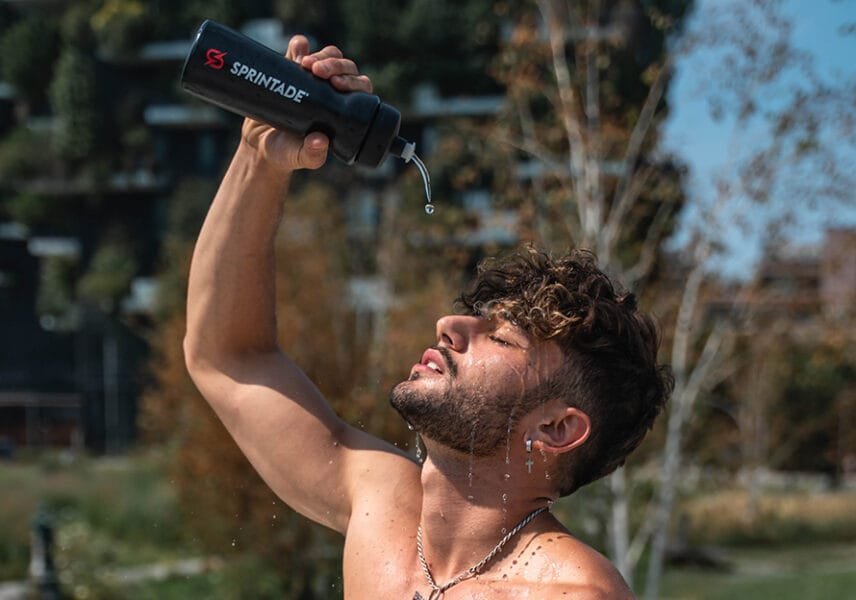Improving strength in endurance sports: mistakes not to be made
In recent years, it has emerged that combining a strength-enhancing protocol with conventional endurance training brings benefits in terms of both performance and health. But what are the mistakes you shouldn’t make to integrate these exercises into your routine?
In the following articles we will instead see individual programs to be included in the training of running, cycling and triathlon.
Why train strength in endurance sports?
We have already talked about strenght training in general. Here are the crucial factors in medium and long distance performance are certainly 3:
1. Maximum oxygen consumption VO2max (see other two [1], [2], [3] articles);
2. The energy cost of locomotion EC;
3. The aerobic resistance AE (thus the aerobic threshold).
It is understandable that the parameter of force has not gone unnoticed by sprinters, both runners and cyclists on the track, but has long been ignored by endurance athletes (interesting article on gluteal volume and speed over 100 m). However, strength training is also crucial for middle and long distance riders, reducing the risk of injury and contributing to the performance. This is because within a certain range, the increase in force has a positive impact on the EC energy cost of locomotion and naturally improves our overall speed. Muscle hypertrophy also contributes to joint control to a certain extent. So there is a meeting point (an efficiency curve) between how strong and performing we are and how light and resistant we are.
Why has the strength parameter been long ignored by endurance athletes?
Of course the marathon runner, the road cyclist have always tried to be as light as possible (minus the triathlete who has to deal with the swim phase). A lower density of nucleotides in muscle fibers, more volume for the same fibers (let’s put it in simple words) could only be an inefficient choice. Compared to fat, the muscle is heavier at the same volume and this has an impact on the energy consumption of the endurance athlete.
The second reason why there is some resistance to boosting is that it would take time to train the central movement, be it pedaling or running. It should be remembered that strength training tends to be more time-focused than aerobic performance training.
Mistakes not to be made to improve strength in endurance sports
But how to start working with weights, kettlebells or elastic bands? We identify mistakes not to be made to improve strength in endurance sports.
1. Plunge headlong into exercises such as squat or sink without understanding that these exercises are complex movements that must be understood and perfected even in empty space;
2. Choose never to recover by adding strength training to endurance training without respecting the correct weekly stop times;
3. Confuse exercises such as uphill running with strength exercises. Those are exercises for our VO2max or for our explosive power, not absolute;
4. Don’t ask yourself the 3 basic questions before training, let’s see them below:
How many repetitions and series to perform?
If we are talking about force we will always work with high load, that is approximately close to our maximum (maximum compared to the serial number we want to apply, not absolute). Repetitions cannot be many, so the sets or the number of sets. Normally we look for a range between 8 and 12 repetitions per exercise, but if we really want to stress the load-thrust ratio we could go down to 4-6 repetitions.
A workout can last between half an hour and an hour including recoveries that can be more than a minute if you are working on strength alone.
What load to use?
Progressivity and caution must be the rule, especially for those with a low mass index. For greater safety it is right to work with buffer, that is to reach the series that is one or two repetitions from breakage, from failure.
How do I know if I’m getting better?
When we run our smartwatch accurately tells us whether our times and pace are getting better or worse. But what about weights?
We come to understand our range of action aware that the psychological factor is of great importance when we work with weights. The instinct is to charge very little if you are afraid, or too much to imitate our friend who has been practicing lifting for 10 years. Understood our load, we have to increase with micro loads even from 250g if necessary to find our load trainer parameter. Let’s also remember that when we give in, we don’t make it anymore it’s not always like in the race; or like when we “take the crack” on a bike. With weights the neuromuscular stimulation is short but intense, “everything now”, and it is at the neurological level that the first failures are generated. But it is precisely these kinds of stimuli that will improve our performance otherwise linked to a repetitive, economical and sometimes almost passive movement.
Oh, and don’t forget to take our protein when you train!
 02/05/22
02/05/22 4
4





